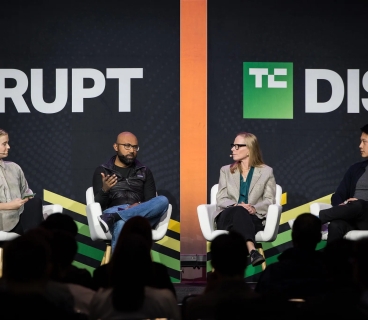Today marks the first day of Plug and Play Summit 2025.
Even the air in Sunnyvale feels different — although it rained yesterday, this morning welcomes us with bright sunshine. It’s as if breathing in Silicon Valley spreads a scent of innovation. At the entrance, hundreds of people stream inside: investors, startup founders, corporate innovation leads, professors… and above all, AI engineers.
The moment you step in, one reality hits you:
300+ startups, 200+ AI companies gathered under one roof.
Wherever you stand, someone is talking about agentic AI, robotics, or industrial LLM applications. Every table has a demo, every hallway has a pitch — it truly feels like a tech carnival. One startup is doing predictive farming in agriculture. Next to it, another is showcasing AI diagnostics for cancer treatment. In another corner, a humanoid robot is learning navigation.
As StartupEvents wrote, Plug and Play this year isn’t just about “tech” — it has expanded into every sector:
Agtech – sensor AI for micro-analysis of soil
Fintech – real-time fraud detection
Deeptech – quantum, robotics, new materials
Healthtech – remote diagnostics, bio-AI
Energy – grid optimization, sustainability
Supply Chain – end-to-end visibility
Mobility – autonomous vehicles, pilotless systems, co-pilot AI
Real Estate & Construction – digital twins, smart materials
In one hall, a fintech startup is pitching to investors; from another hall you hear the whirring of robots. It feels like 17 different futures are living in the same building. Panels and keynotes revolve around the main question: “Where are we heading?” Every speaker on stage repeats the same three words: Innovation. Investment. Future.
According to Plug and Play’s own website, this year’s opening speeches are noticeably more serious — the world is entering the AI race at full speed, and everyone is trying to understand the new rules. The discussions highlight:
Industrial transformation powered by AI
Real integration challenges
Corporate transitions to AI-driven systems
Balancing innovation and risk
Capital’s new direction: “investment in intelligence”
The room is filled with so many international experts that at times it feels like a UN conference.
How Amazon Builds Innovation
When Franziska Grosser (Head of Amazon’s $1B Industrial Innovation Fund | Director of Corporate Development) took the stage, one thing became very clear: Amazon’s strength isn’t only in robots, AI, or massive investments. Their real strength is a culture that deeply understands the problem, agile collaboration, and teams that complement each other.
I asked myself: Why is Amazon always ahead?
The answer is simple: They see the problem from the inside.
Starting from the customer is their “secret password.”
“At Amazon, innovation doesn’t start with technology. It starts with a customer’s pain point. Everything we do is Working Backwards.”
This resonated with me — technology has value only when a real problem exists.
Startup Agility + Amazon Scale = Powerful Synergy
Listening to Franziska, it became clear why large companies are often slow —
but Amazon breaks this rule.
Because:
Internal teams are incredibly strong
Startups are incredibly fast
Franziska put it very honestly:
“We complete startups, and they complete us.”
This line struck me because true innovation never happens alone.
The Innovation Challenge — opening the problem to the world
Amazon doesn’t hide problems — they open them, and look for solutions globally. Their process is simple but incredibly powerful:
Problem defined
Startups selected
Direct meetings with leaders
On-site observation
Only solutions that work go to pilot
Portfolio Day — innovation breathing
Imagine this:
- All portfolio startups fly to Seattle
- 100+ Amazon leaders talk to them face-to-face
- Solutions are demonstrated directly to the teams who need them
- There’s no “show element” at all. Just real problems, real people, real results.
Franziska’s strongest statement:
“We don’t innovate for the showcase.”
How I now see Amazon’s innovation mindset
- Start from the problem
- Bring the ecosystem inside
- Unite teams
- Test in the real world
- Accept nothing that can’t scale
And the most powerful principle:
“No big company builds innovation alone.”












